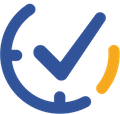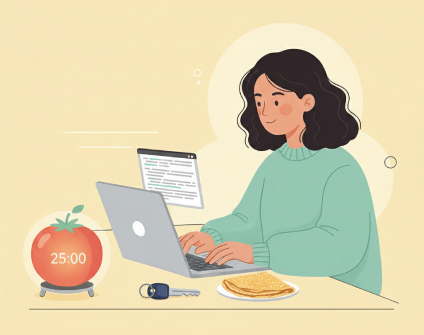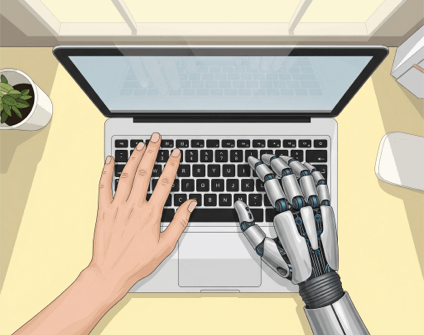In today’s world, where there’s an app or software for nearly every task, it’s easy to feel overwhelmed by the sheer number of tools at our disposal. We often juggle more than we need, from productivity apps to task managers, note-taking tools, and communication platforms. The concept of digital minimalism offers a refreshing alternative: using fewer tools to achieve more. By simplifying your digital setup, you can improve focus, reduce distractions, and significantly boost your productivity.
The Problem with Tool Overload
The irony of today’s digital landscape is that, while these tools are designed to make our lives easier, they can become a source of distraction. Switching between multiple apps often results in “tool fatigue,” where the cognitive load of managing them drains mental energy that could be better spent elsewhere. When you’re constantly bouncing between apps to check notifications, update lists, and track progress, it’s easy to lose sight of the actual work that needs to be done.
The Principles of Digital Minimalism
By reducing the number of digital tools you use, you free up mental space to focus on what truly matters. This allows you to spend more time in deep work—focused, distraction-free productivity. Digital minimalism isn’t about eliminating technology, but about intentionally selecting the tools that provide the most value and cutting out those that don’t. It’s a strategy that prioritizes quality over quantity, helping you streamline your workflow. Here are some core principles of this approach:
– Purposeful Use: Only use tools that serve a clear, defined purpose in your life or work.
– Consolidation: Instead of using several apps for similar functions, find one tool that can handle multiple tasks.
– Decluttering: Regularly review and remove apps that are no longer helpful or are redundant.
As Cal Newport, author of Digital Minimalism: Choosing a Focused Life in a Noisy World, explains, “Clutter is costly. It makes you feel busy when you’re not, and it often leads to procrastination.”

Tips for Digital Minimalism
1. Audit Your Tools: Start by listing out all the digital tools you use regularly. Do you need a separate app for every single task, or can some functions be consolidated into one?
2. Set Boundaries: Establish clear boundaries for how and when you use certain tools. For instance, limit email checking to specific times of the day or set Do Not Disturb settings on apps when focusing on deep work.
3. Limit New Tools: It’s tempting to try out the latest shiny app, but before adding something new to your workflow, ask yourself if it really adds value. Will it replace something you already use, or is it just adding complexity?
4. Uninstall Regularly: Every few months, review the tools you’re using and uninstall any that are no longer necessary. Apps that don’t significantly contribute to your goals should be removed.
5. Master the Tools You Have: Instead of constantly searching for new solutions, invest time in mastering the genuinely useful tools. Often, the full potential of a tool is unlocked through deeper usage, not by hopping to a new one.
Simplicity is powerful, and digital minimalism helps foster a more focused and intentional approach to work. Instead of feeling like you’re always behind on managing your tools, you get the freedom to dive deep into important projects and tasks. The fewer tools you have to manage, the more mental bandwidth you have to work on what matters.
As Albert Einstein famously said, “Everything should be made as simple as possible, but not simpler.” The goal isn’t to remove all technology, but rather to simplify it so that it serves you, not the other way around.

Achieve Digital Minimalism with Planndu
Planndu, a simple and efficient task management app, demonstrates the power of consolidating tasks into one place. Instead of bouncing between multiple platforms, Planndu allows you to manage all aspects of task management from one app. With built-in reminders, a Pomodoro focus timer, and collaboration features, it simplifies the process by reducing the need for extra tools. You can prioritize tasks, set repeating reminders, and track progress—all without leaving the app. It helps avoid the app-switching trap and allows you to concentrate on what truly needs your attention.

Simplifying your tools can make a significant difference in your productivity. You can reduce distractions, streamline your workflow, and ultimately get more done. The path to increased productivity isn’t always about adding more—it’s often about using less. By simplifying your digital toolkit, you can regain focus and start achieving more with fewer distractions.
In the words of Leonardo da Vinci, “Simplicity is the ultimate sophistication.” Experience the simplicity of fewer tools, and see your productivity reach new heights.




